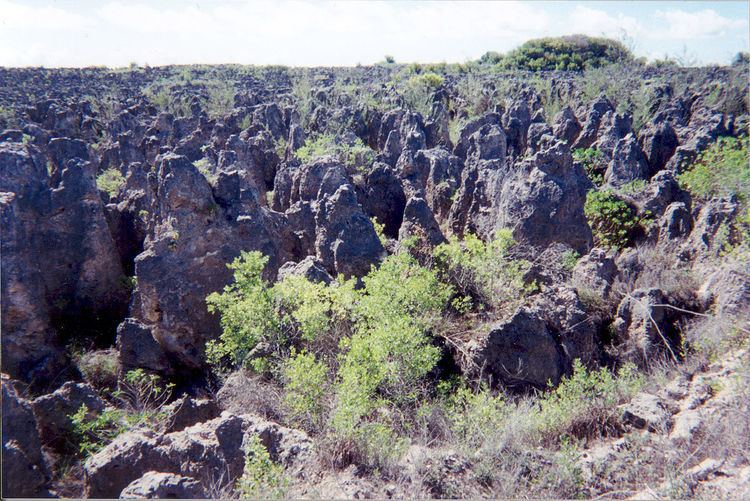 | ||
Land degradation is a process in which the value of the biophysical environment is affected by a combination of human-induced processes acting upon the land. It is viewed as any change or disturbance to the land perceived to be deleterious or undesirable. Natural hazards are excluded as a cause; however human activities can indirectly affect phenomena such as floods and bush fires.
Contents
This is considered to be an important topic of the 21st century due to the implications land degradation has upon agronomic productivity, the environment, and its effects on food security. It is estimated that up to 40% of the world's agricultural land is seriously degraded.
Measures
Land degradation is a broad term that can be applied differently across a wide range of scenarios. There are four main ways of looking at land degradation and its impact on the environment around it:
- A temporary or permanent decline in the productive capacity of the land. This can be seen through a loss of biomass, a loss of actual productivity or in potential productivity, or a loss or change in vegetative cover and soil nutrients.
- Action in the land's capacity to provide resources for human livelihoods. This can be measured from a base line of past land use.
- Loss of biodiversity: A loss of range of species or ecosystem complexity as a decline in the environmental quality.
- Shifting ecological risk: increased vulnerability of the environment or people to destruction or crisis. This is measured through a base line in the form of pre-existing risk of crisis or destruction.
A problem with defining land degradation is that what one group of people might view as degradation, others might view as a benefit or opportunity. For example, planting crops at a location with heavy rainfall and steep slopes would create scientific and environmental concern regarding the risk of soil erosion by water, yet farmers could view the location as a favourable one for high crop yields.
Different types
In addition to the usual types of land degradation that have been known for centuries (water, wind and mechanical erosion, physical, chemical and biological degradation), four other types have emerged in the last 50 years:
Overall, 36 types of land degradation can be assessed. All are induced or aggravated by human activities, e.g. sheet erosion, silting, aridification, salinization, urbanization, etc.
Causes
Land degradation is a global problem largely related to agricultural use. Causes include:
Effects
Overcutting of vegetation occurs when people cut forests, woodlands and shrublands—to obtain timber, fuelwood and other products—at a pace exceeding the rate of natural regrowth. This is frequent in semi-arid environments, where fuelwood shortages are often severe.
Overgrazing is the grazing of natural pastures.at stocking intensities above the livestock carrying capacity; the resulting decrease in the vegetation cover is a leading cause of wind and water erosion. It is a significant factor in Afghanistan. The growing population pressure, during 1980-1990, has led to decreases in the already small areas of agricultural land per person in six out of eight countries (14% for India and 22% for Pakistan).
Population pressure also operates through other mechanisms. Improper agricultural practices, for instance, occur only under constraints such as the saturation of good lands under population pressure which leads settlers to cultivate too shallow or too steep soils, plough fallow land before it has recovered its fertility, or attempt to obtain multiple crops by irrigating unsuitable soils.
High population density is not always related to land degradation. Rather, it is the practices of the human population that can cause a landscape to become degraded. Populations can be a benefit to the land and make it more productive than it is in its natural state. Land degradation is an important factor of internal displacement in many African and Asian countries
Severe land degradation affects a significant portion of the Earth's arable lands, decreasing the wealth and economic development of nations. As the land resource base becomes less productive, food security is compromised and competition for dwindling resources increases, the seeds of famine and potential conflict are sown.
Sensitivity and resilience
Sensitivity and resilience are measures of the vulnerability of a landscape to degradation. These two factors combine to explain the degree of vulnerability. Sensitivity is the degree to which a land system undergoes change due to natural forces, human intervention or a combination of both. Resilience is the ability of a landscape to absorb change, without significantly altering the relationship between the relative importance and numbers of individuals and species that compose the community. It also refers to the ability of the region to return to its original state after being changed in some way. The resilience of a landscape can be increased or decreased through human interaction based upon different methods of land-use management. Land that is degraded becomes less resilient than undegraded land, which can lead to even further degradation through shocks to the landscape.
Climate change
Significant land degradation from seawater inundation, particularly in river deltas and on low-lying islands, is a potential hazard that was identified in a 2007 IPCC report.
As a result of sea-level rise from climate change, salinity levels can reach levels where agriculture becomes impossible in very low-lying areas.
